The Killing Fields: confronting the heart of darkness
 Wednesday, October 31, 2012 at 06:28PM
Wednesday, October 31, 2012 at 06:28PM Six months after my visit to Auschwitz, my tour of Cambodia, October, 2012, brought me to another confrontation with one of the darkest and most shameful chapters of human history – the Khmer Rouge regime, under its infamous leader Pol Pot, April, 1975 to January, 1979. A total of over two million died during the regime, from execution, starvation and disease.
While Cambodia was mourning the passing of King Norodom Sihanouk who died a week before my visit, and his larger-than-life photos were displayed in front of many public buildings in Phnom Penh, I visited the Tuol Sleng Genocide Museum, the site of the former Tuol Sleng Prison, commonly known as S21, converted from a high school to a prison during the Khmer Rouge regime. Its prisoners were the once elite of the country, professionals, intellectuals and the rich, as well as members of the preceding military government, and the regime’s own cadres accused of being traitors. Silently, somberly, I walked through the halls of death, past barb-wired fencing, bleak and spartan rooms for interrogation and torture. In one building were all too horrid photos of the victims of different modes of torture, celluloid testaments to acts of inhumanity committed by the regime on the prisoners of S21. In another building were mug shots of all the inmates of S21, portraits of resignation, defiance, fear, confusion. In desperation and fear of more torture, many were to confess to crimes they did not commit, unaware that confessions or not, they would be sent to the Killing Fields for execution. 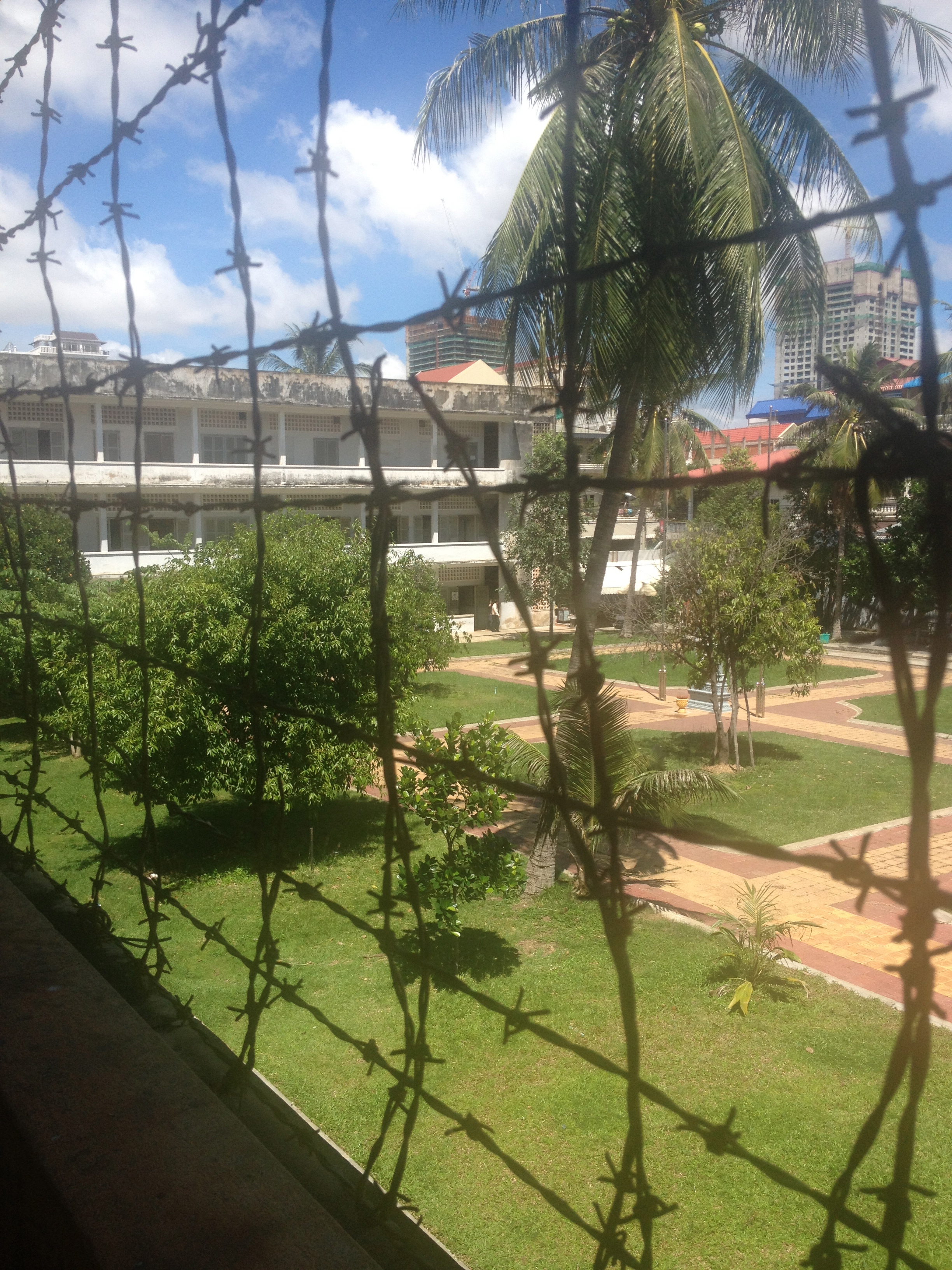 The once high school, converted to a prison, S21, during the Khmer Rouge regimeWalking past narrow individual cells and mass detention rooms, I finally came to a hall displaying autobiographical accounts by the sole seven survivors of the 20,000 inmates of S21. A photo of the group of seven taken after their liberation in 1979 was posted. Lean and gaunt, they were the ultimate witnesses to the human spirit, its dignity, hope and resilience. Today, only two of the seven survivors are still alive. They were at the genocide museum to meet visitors. I bought a copy of Huy Vannak’s biography of Bou Meng, one of the two living survivors, and had a photo taken with him.
The once high school, converted to a prison, S21, during the Khmer Rouge regimeWalking past narrow individual cells and mass detention rooms, I finally came to a hall displaying autobiographical accounts by the sole seven survivors of the 20,000 inmates of S21. A photo of the group of seven taken after their liberation in 1979 was posted. Lean and gaunt, they were the ultimate witnesses to the human spirit, its dignity, hope and resilience. Today, only two of the seven survivors are still alive. They were at the genocide museum to meet visitors. I bought a copy of Huy Vannak’s biography of Bou Meng, one of the two living survivors, and had a photo taken with him.
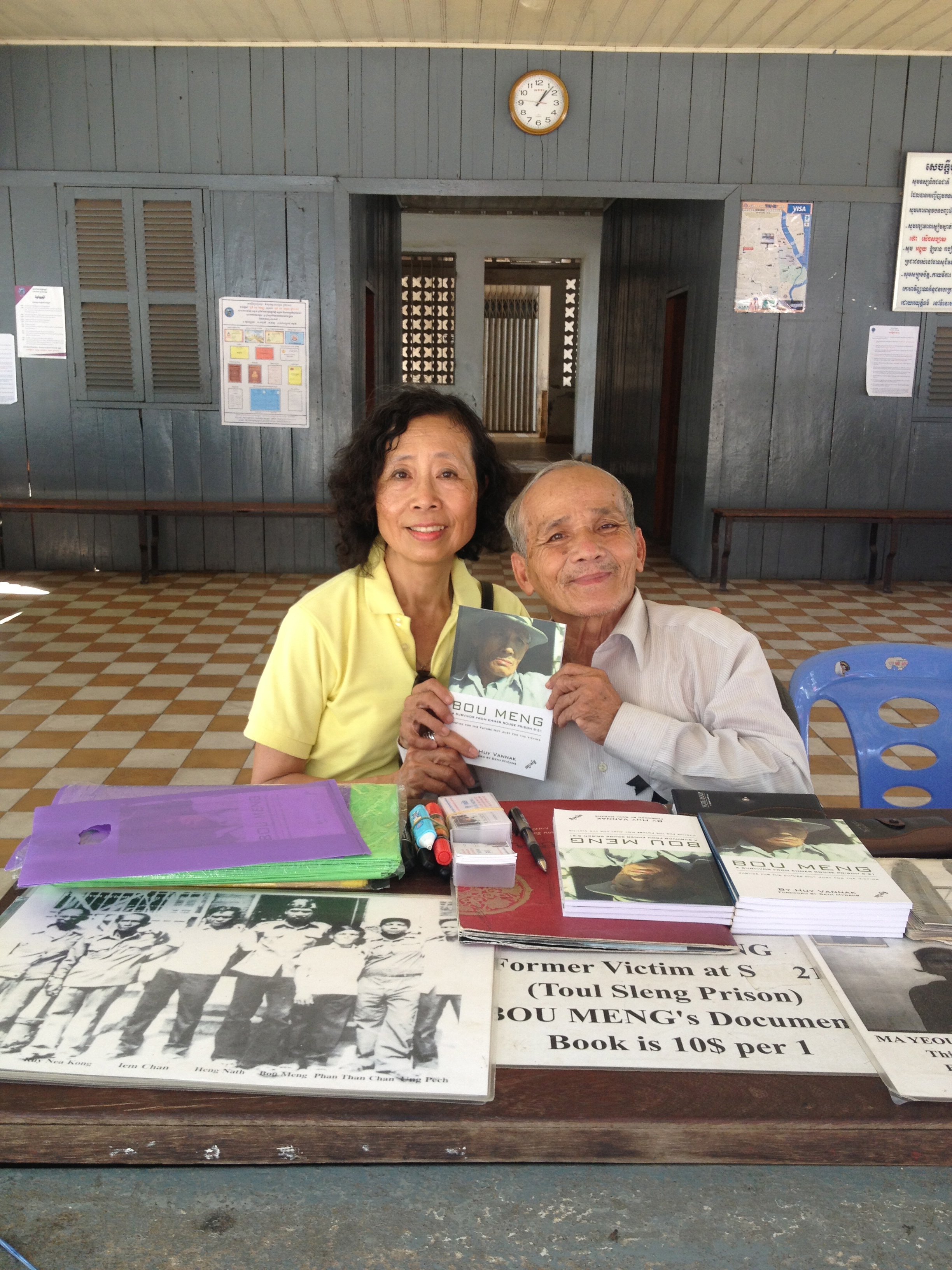
With Bou Meng, one of the living survivors of the Khmer Rouge regime
From S21, I rode a tour bus to the nearby Choeung Ek execution ground, commonly known as the Killing Fields. On that hot and humid day, the former secret execution site of the Khmer Rouge regime was a quiet, peaceful field of green grass, deciduous trees, a few shacks, marred by expansive vacant ditches that were once the mass graves of the executed. A tall and slim-looking Memorial Hall with glass walls on four sides contained the skulls of those killed in the Killing Fields during the Khmer Rouge regime, grim and shocking reminders of the cruelties, atrocities, horrible crimes against humanity committed there over thirty years ago.
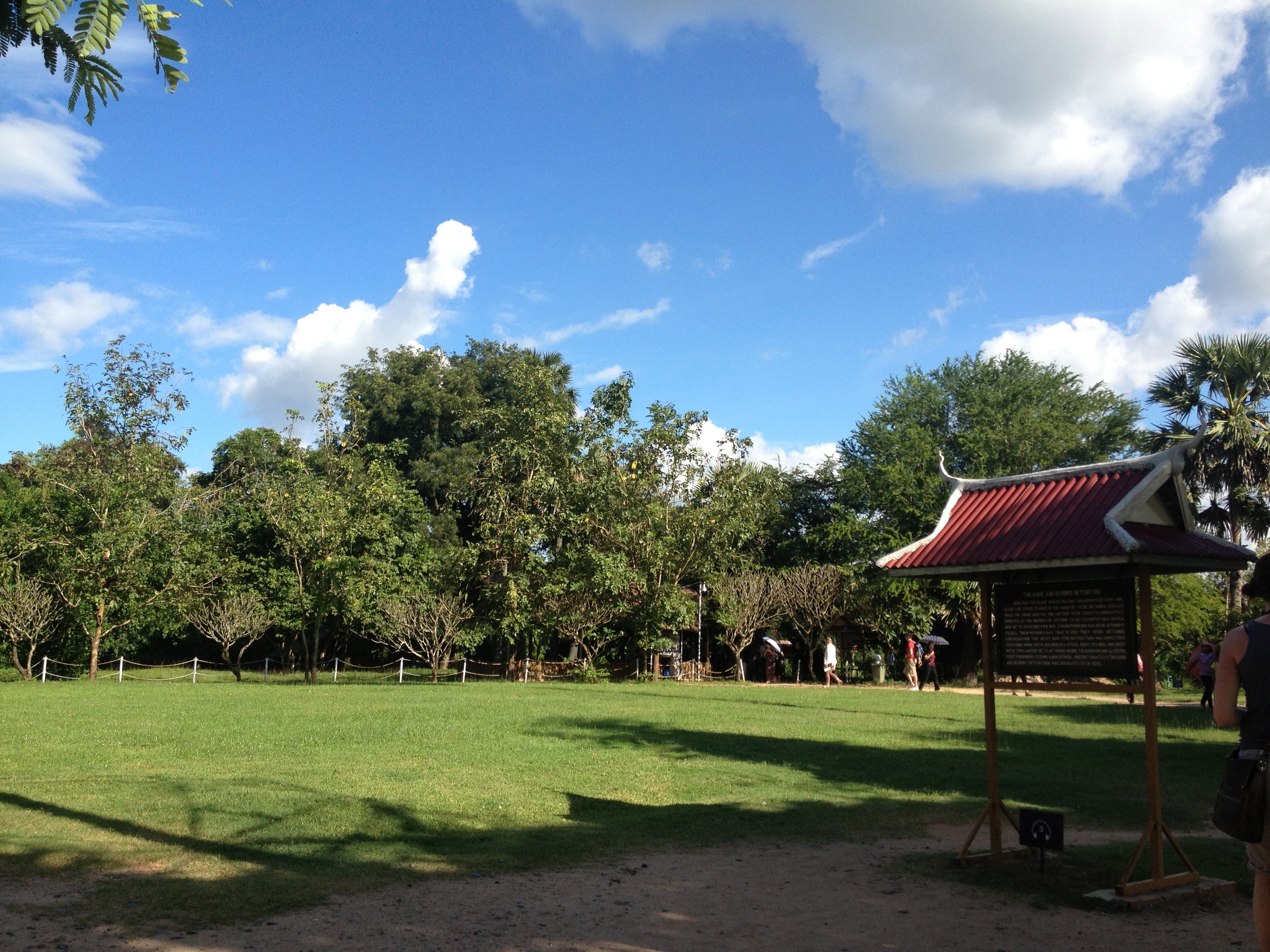 The Killing Fields today: ordinary, restful fields of green grass and scattered trees, marred by empty mass graves
The Killing Fields today: ordinary, restful fields of green grass and scattered trees, marred by empty mass graves
At the time of the Khmer Rouge (Pol Pot) regime, truckloads of prisoners arrived every day, most of whom were executed immediately upon arrival. Blindfolded, they were made to kneel facing a pit. Every prisoner suffered a shattering blow or two to the head and neck from behind, and he or she would fall into the mass grave dug out for that purpose. Those not killed immediately were detained in a dark room till the next day to be executed. Our guide described the wide range of instruments used for killing: hatchets, hoes, knives, cart axles, anything that would deal a fatal blow to the victims, even the long, dried and hardened leaves of the sugar palm, with sharp, tooth-like edges like a saw’s. One of the most heartrending sights was the Killing Tree, a huge old tree with a big, hard trunk, against which the executioners beat babies, while their mothers watched before they met their own demise. Sounds coming from loudspeakers hung on a nearby ‘Magic Tree’ were used to drown out the cries and moans from the victims being executed. 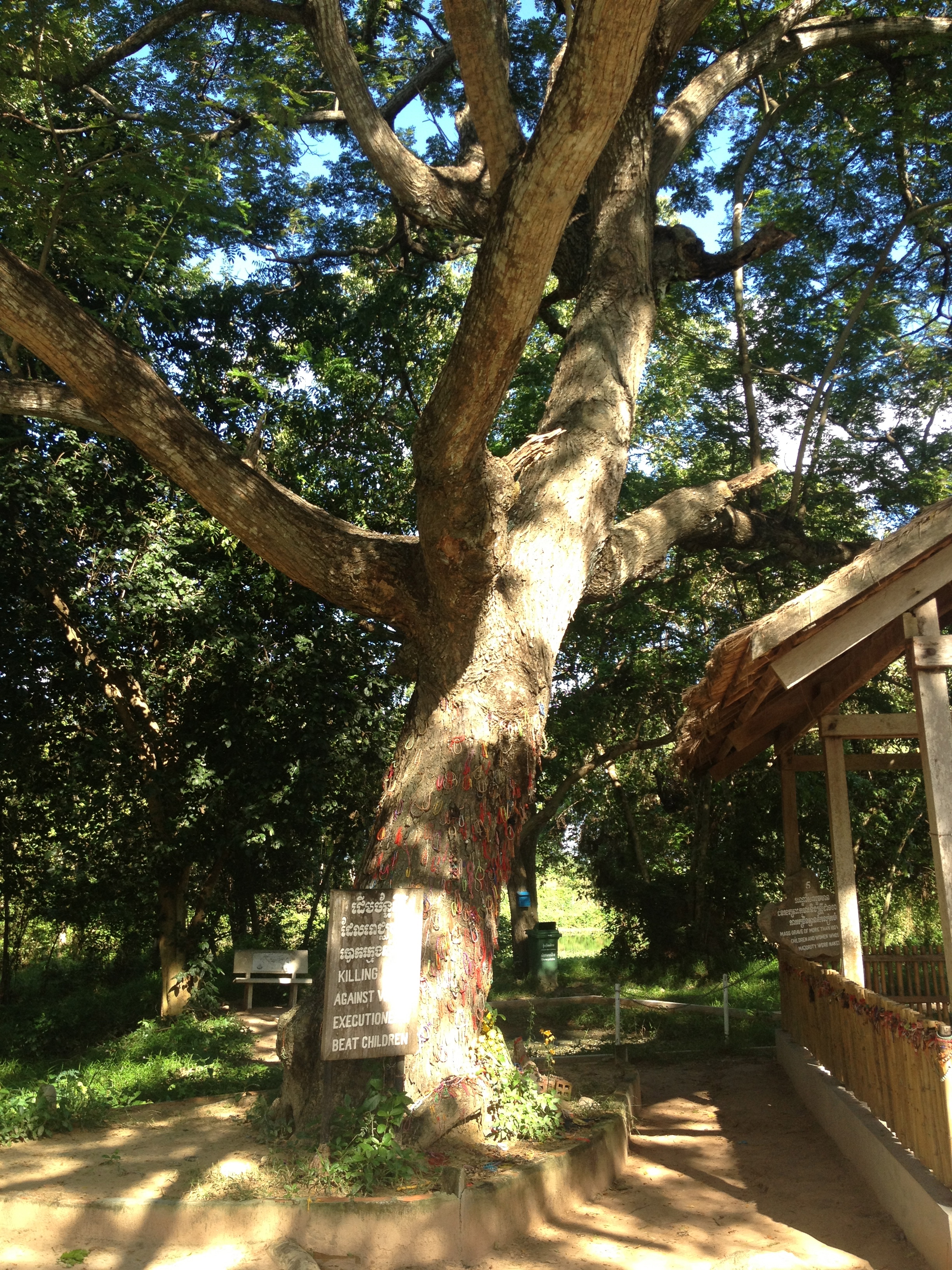 The Killing Tree: too heartrending for thought
The Killing Tree: too heartrending for thought
A few butterflies flittered among the scattered wild flowers of the Killing Fields, green grass everywhere, surrounded by distant trees. The place seemed ordinary, even restful, but for the empty mass graves and signs marking the scenes of horror over three decades ago. Perhaps peace had finally come to the spirits of the victims in the Killing Fields….
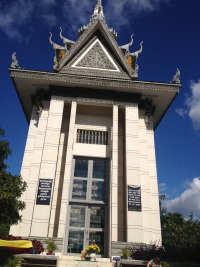 The Memorial Hall: skulls of the unidentified victims at the Killing Fields
The Memorial Hall: skulls of the unidentified victims at the Killing Fields
 Elsie |
Elsie |  Post a Comment |
Post a Comment |
Reader Comments